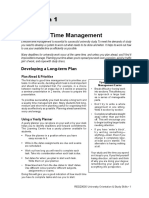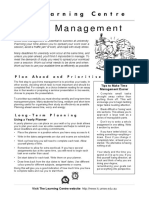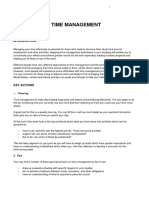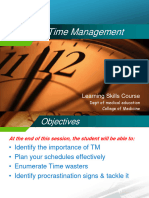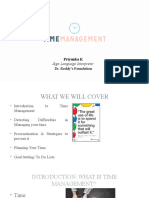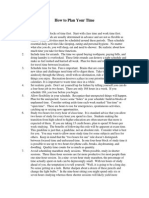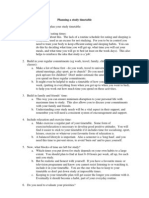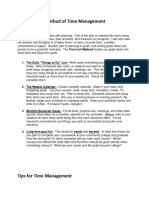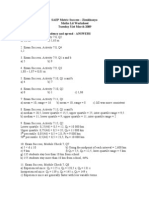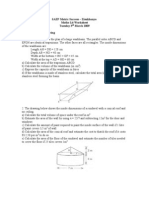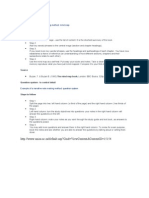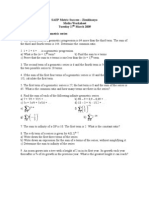0% found this document useful (0 votes)
130 views3 pagesTime Management
The document provides guidance on time management through long-term, short-term, and daily planning. It recommends starting with long-term planning by listing important annual dates in a planner. Short-term planning involves creating a weekly schedule to allocate specific times for tasks, commitments, study, and relaxation. An example weekly schedule is given to illustrate allocating times for activities, meals, meetings, study, family and relaxation.
Uploaded by
Cape Town After-School TutorialsCopyright
© Attribution Non-Commercial (BY-NC)
We take content rights seriously. If you suspect this is your content, claim it here.
Available Formats
Download as DOC, PDF, TXT or read online on Scribd
0% found this document useful (0 votes)
130 views3 pagesTime Management
The document provides guidance on time management through long-term, short-term, and daily planning. It recommends starting with long-term planning by listing important annual dates in a planner. Short-term planning involves creating a weekly schedule to allocate specific times for tasks, commitments, study, and relaxation. An example weekly schedule is given to illustrate allocating times for activities, meals, meetings, study, family and relaxation.
Uploaded by
Cape Town After-School TutorialsCopyright
© Attribution Non-Commercial (BY-NC)
We take content rights seriously. If you suspect this is your content, claim it here.
Available Formats
Download as DOC, PDF, TXT or read online on Scribd
/ 3

